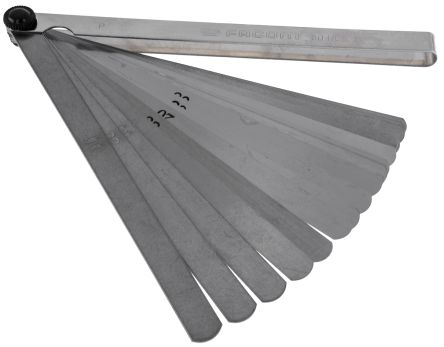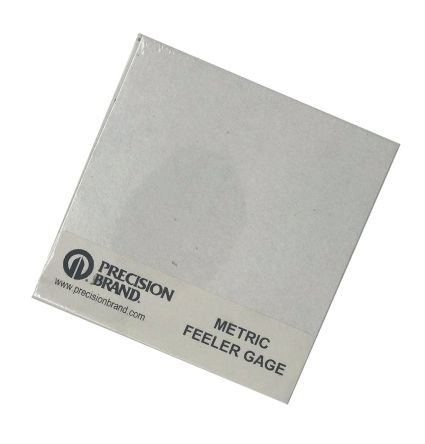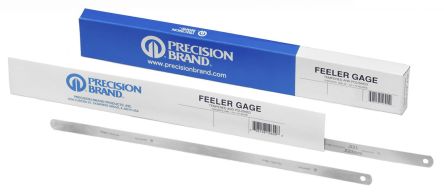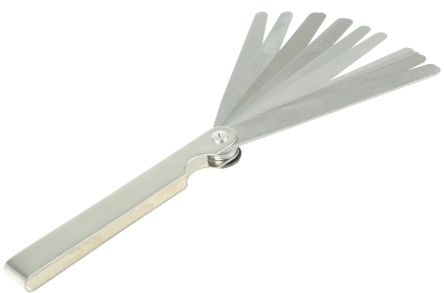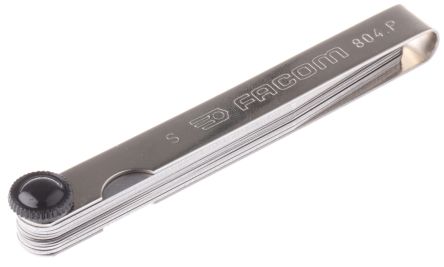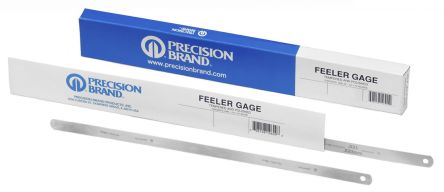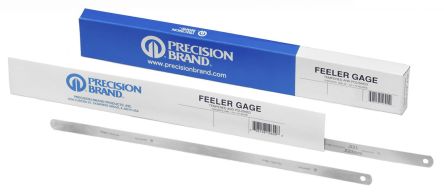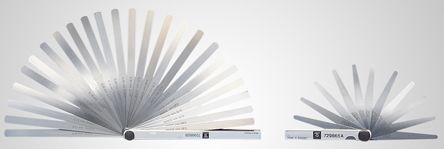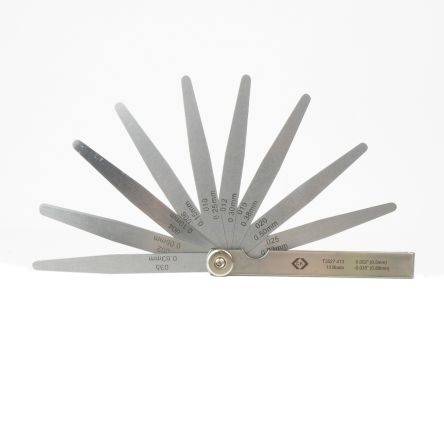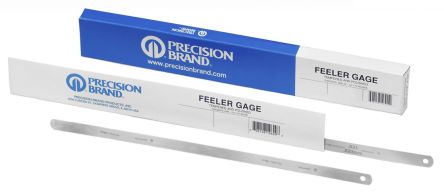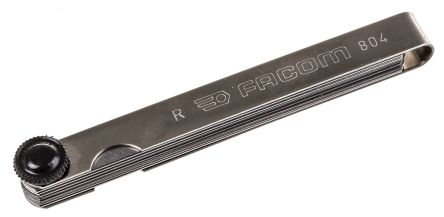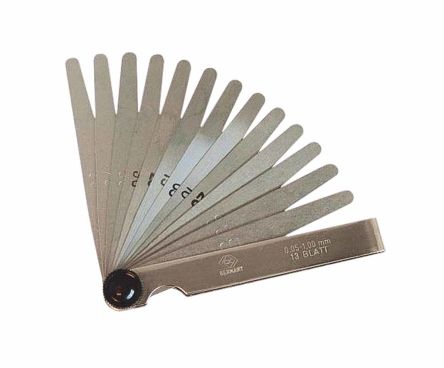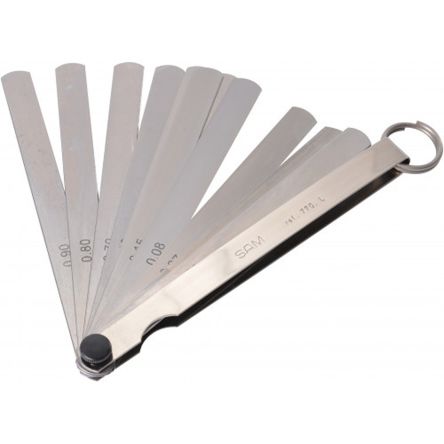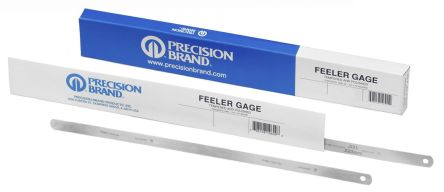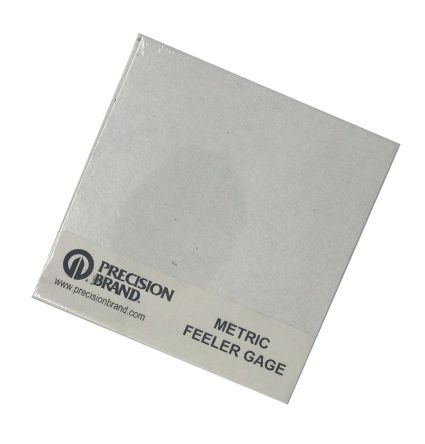- Automation & Control Gear
- Cables & Wires
- Enclosures & Server Racks
- Fuses & Circuit Breakers
- HVAC, Fans & Thermal Management
- Lighting
- Relays & Signal Conditioning
- Switches
- Batteries & Chargers
- Connectors
- Displays & Optoelectronics
- ESD Control, Cleanroom & PCB Prototyping
- Passive Components
- Power Supplies & Transformers
- Raspberry Pi, Arduino, ROCK, STEM Education & Development Tools
- Semiconductors
Feeler Gauges
A feeler gauge is a hand-held measuring tool used to measure the size of small gaps between two objects that are in close proximity. The tool has a number of folding metal strips (also known as blades or leaves) which are machined to specified thickness levels. They are usually made out of tempered tool steel or stainless steel and should be rust resistant. You can find out more in our complete guide to feeler gauges.
Measurements are given in millimetres or inches and can be found on each individual strip. A feeler gauge fits into small gaps which can be less than 5.08mm and can take measurements as small as 0.02mm to 5.08mm.
The tool is ideal for use in spaces where other measuring devices such as a tape measure could not fit. They are flexible and easy to bend so they can fit into difficult positions.
Feeler gauges are mostly used in engineering to accurately measure the clearance between two parts to ensure that mechanical parts are in safe working order.
Parts of a feeler gauge:
- Case – either plastic or steel, and protects blades/leaves when tool is not in use, compact storage
- Locking device
- Leaves or blades – thin strips of metal with inscribed measurements on each referring to the thickness of the blade
What can feeler gauges measure?
Can be used for checking: tappet clearances, spark plug gaps, distributor points, bearing clearances and piston ring gaps.
Different types of feeler gauge:
- Go NoGo feel gauge – thick base and a thinner top, the thinner end is able to 'go' into the gap and the thicker body will not 'no go'
- Straight lead feeler gauge – blades are consistently parallel
- Tapered feeler gauge – blades thin out towards the tip
- Double ended gauge
- Offset gauge – blades are bent towards the tip for easier access in most motor vehicle applications and work in restrictive areas
- Feeler strip – blades are not connected in a set and either end can be used to measure
